Maxillomandibular Relations Short Essays
Question 1. Define face bow. Explain the parts of the face bow
Answer:
Definition Of Face Bow:
A caliper-like device is used to record the relationship of the jaws to the temporomandibular joints & to orient the casts on the articulator to the relationship of the opening axis of the temporomandibular joint
Parts Of Face Bow:
1. U-Shaped Frame:
- Fce bow is a U-shaped metallic bar that forms the main frame of the face bow
- All other components are attached to it
- Face bow records the plane of the cranium
Read And Learn More: Prosthodontics Questions And Answers
2. Condylar Rods:
- Condylar rods are two small metallic rods on either side of the free end of the U-shaped frame
- Helps to locate the hinge axis
- Transfer the hinge axis of the TMJ by attaching it to the condylar shaft in the articulator
3. Bite Fork:
Bite Fork is U U-shaped plate that is attached to the occlusal rims while recording the orientation relation It is attached to the frame with the help of a stem
Bite Fork should be inserted about 3 mm below the occlusal surface within the occlusal rim
Prosthodontics Notes on Jaw Relations
4. Locking Device:
- The locking Device helps to attach the bite fork to the U-shaped frame
- The locking Device supports the face bow and occlusal rim, and is cast during articulation
- The locking Device consists of a transfer rod and a transverse rod. The U-shaped frame is attached to the vertical transfer rod
- A transverse rod connects the transfer rod with the stem of the bite fork

5. Orbital Pointer:
- Orbital Pointer marks the anterior reference point
- Present only in the arbitrary face bow
Question 2. Balanced Occlusion.
Answer:
Balanced Occlusion Definition:
“The simultaneous compacting of the maxillary & mandibular teeth on the right & left & in the anterior & posterior occlusal areas in centric & eccentric positions, developed to lessen or limit tipping or rotating of the denture bases concerning the supporting structures”.
Types Of Balanced Occlusion:
- Unilateral balanced occlusion
- Bilateral balanced occlusion
- Protrusive balanced occlusion
- Lateral balanced occlusion
Laws Of Balanced Articulation:
- Condylar guidance
- Incisal guidance
- Compensatory curves
- Relative cusp height
- The plane of the orientation of the occlusal plane
Factors Influencing Balanced Occlusion:
- Condylar guidance
- Incisal guidance
- Orientation of occlusal plane
- Cuspal angulation
- Compensatory curves
Complete Denture Maxillomandibular Relations
How Balance Is Achieved:
- The incisal and condylar guidance produces an increase in posterior separation
While other three factors i.e., occlusal plane, cervical angulation, and compensatory curves, cause a decrease in posterior separation. - The effect of incisal and condylar guidance should counteract the other three factors to obtain a balanced occlusion
Question 3. Unbalanced occlusion.
Answer:
Unbalanced Occlusion is an arrangement of teeth with a Form or purpose
Unbalanced Occlusion General Considerations:
- Opposing artificial teeth should not contact in eccentric relation
- Tooth contact should occur only when the mandible is in centric occlusion
- Repeat the mandibular movements till the comfort of the patient in centric relation
Unbalanced Occlusion Concepts:
1. Pound’s Concept:
- Proposed importance of phonetics & aesthetics for anterior teeth
- While posterior teeth should have a sharp upper lingual cusp & wide lower central fossa
- Lingualized occlusion
- A triangle is formed between the mesial end of the canine & the two sides of the retromolar pad
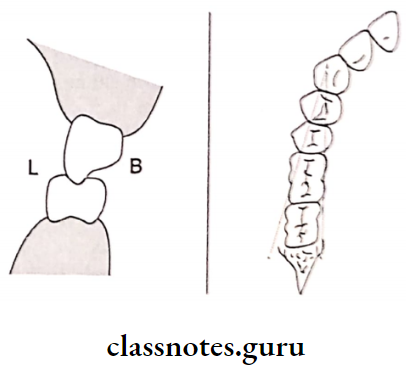
2. Hardy’s Concept: Proposed a flat occlusal plane with non-anatomical teeth for complete denture
3. Kurth’s Concept: Flat posterior teeth in a horizontal plane without any balancing ramps. It is an arrangement of teeth with form or purpose
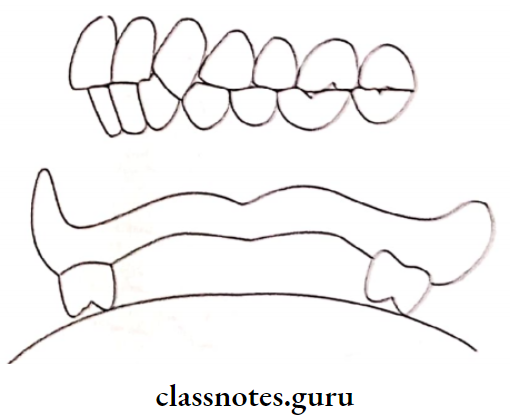
Question 4. Orientation relation in the complete denture, And Write Face bow
Answer:
Orientation Jaw Relation:
- “The jaw relation when the mandible is kept in its most posterior position, it can rotate in the sagittal plane around an imaginary transverse axis passing through or near the condyles”.
- It can be recorded with the help of a face bow
Centric Relation in Complete Dentures
Face Bow:
A caliper-like device that is used to record the relationship of the jaws to the temporomandibular joints & to orient the casts on the articulator to the relationship of the opening axis of the temporomandibular joint
Face Bow Parts:
- U-shaped frame
- Condylar rods
- Bite fork
- Locking device
- Orbital pointer
Face Bow Types:
- Arbitrary Face Bow:
- Facia type
- Earpiece type
- Hanau face bow
- Systematic
- Twirl bow
- Whipmix
- Kinematic Face Bow:

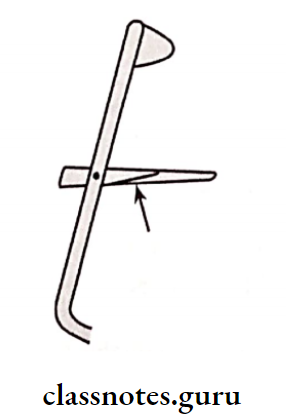
- Aluwax is softened
- The bite fork is embedded into this wax. A thin layer of petroleum jelly is applied over both the rims
- Both the rims are inserted into the patient’s mouth
- The bite fork is also inserted into the patient’s mouth. Ask the patient to close their mouth
- The stem of the bite fork is locked to the transverse rod
- The orbital pointer is made to touch the infraorbital notch
- The entire face bow, along with the rims is removed and articulated
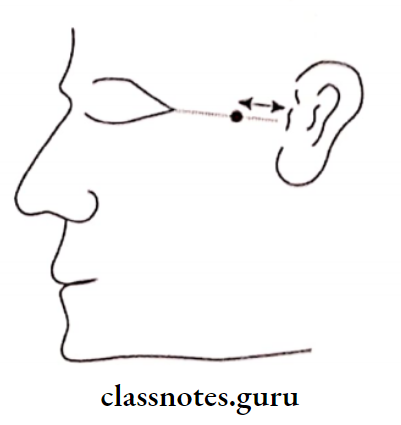
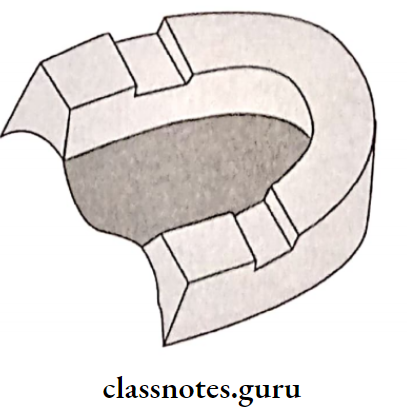



Vertical Dimension of Occlusion Essays
Question 4. Occlusal rims.
Answer:
Occlusal Rims Definition:
Occluding surfaces built on temporary or permanent denture bases for the purpose of making maxillo-mandibular relation records & arranging teeth
Occlusal Rims Factors Controlling It:
1. Relationship Of Natural Teeth To The Bone:
- Rims should be parallel to the long axis of the teeth to be replaced
- The maxillary anterior is labially inclined, and the posteriors are vertically placed
2. Relationship Of Occlusal Rims To Edentulous Ridge:
- The midline of the occlusal plane should pass through the apex of the edentulous ridge
3. Standard Dimensions:
- Maxillary rims
- Height: 22 mm
- Width: 4-6 mm in the anterior region
- Width: 8-12 mm in the posterior region

- Mandibular rims
- Height: 6-8 mm
- Width: 4-6 mm in the anterior region
- Width: 8-12 mm in the posterior region
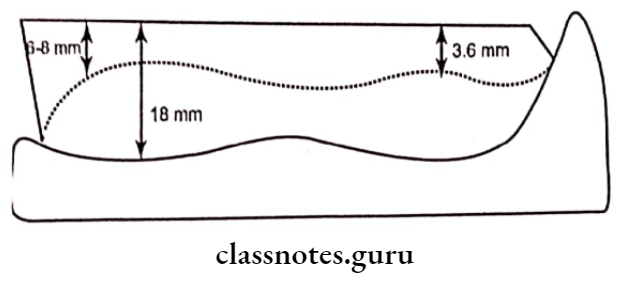
4. Clinical Guidelines:
- Maxillary anterior edge 0-2 mm below the upper lip
- Maxillary posterior occlusal plane 1/4th inch below the opening of Stenson’s duct
- Mandibular incisal edge at the level of the lower lip
- Canine eminence at the corner of the mouth
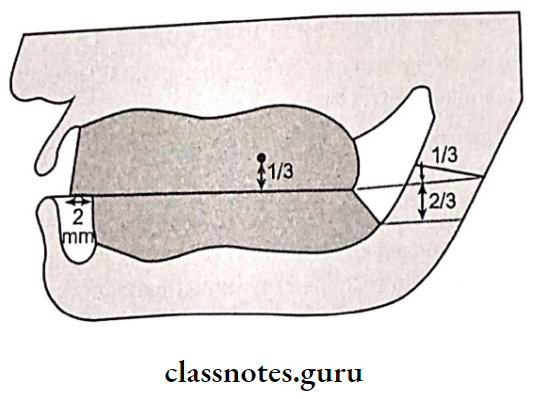
5. Techniques For Fabrications:

- Rolled Wax technique
- Metal occlusal rim former
- Pre-formed Occlusal rim
